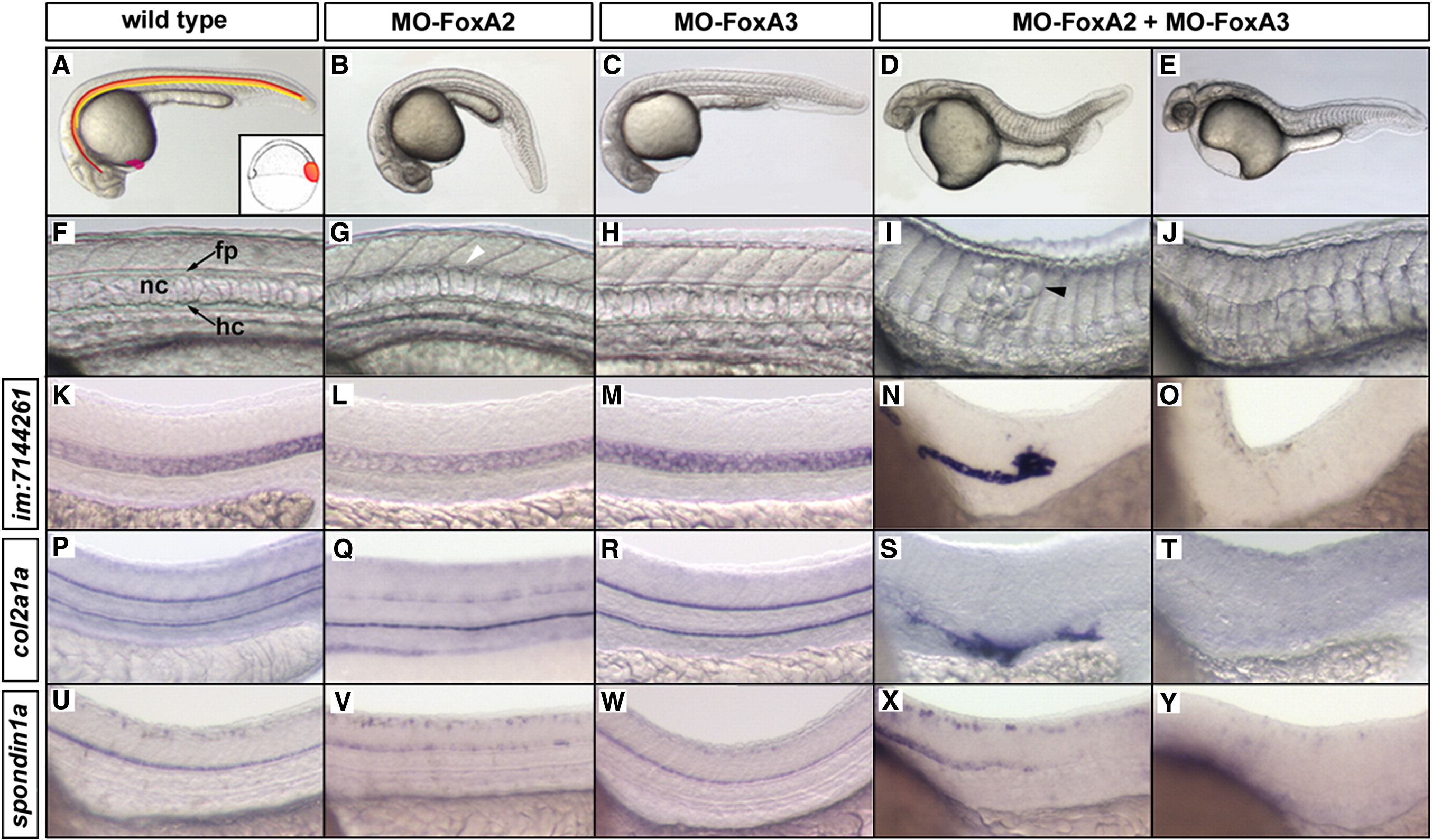Fig. 1 FoxA2 and FoxA3 have redundant activities essential for the formation of axial structures. (A) Schematic representation of the axial structures in a wild-type embryo at 24 hpf (hatching gland, pink; floor plate, red; notochord, orange; hypochord, yellow) and of their progenitors (inset) at the dorsal margin of early gastrula. (B) FoxA2 morphant is ventrally curved and shows failure in floor plate differentiation (white arrowhead in G). (C) FoxA3 morphant lacks the hatching gland but develops the rest of axial structures. (D?E) FoxA2?FoxA3 double morphants are strongly impaired for notochord development. Mild phenotype (D) is characterized by a caudal truncation and by local disorganizations (black arrowhead in I) of the notochord. (E) Strong phenotype is characterized by a complete lack of notochord. (F?J) High magnification of the truncal region of embryos presented in A?E, that shows floor plate (fp), notochord (nc) and hypochord (hc). (K?Y) Analysis of molecular markers specific of notochord (im:7144261, K?O), floor plate and hypochord (col2a1a, P?T) and floor plate (spondin1a, U?Y) at 24 hpf in the trunk region. Embryos are in lateral views, anterior to the left.
Reprinted from Developmental Biology, 350(2), Dal-Pra, S., Thisse, C., and Thisse, B., FoxA transcription factors are essential for the development of dorsal axial structures, 484-495, Copyright (2011) with permission from Elsevier. Full text @ Dev. Biol.

